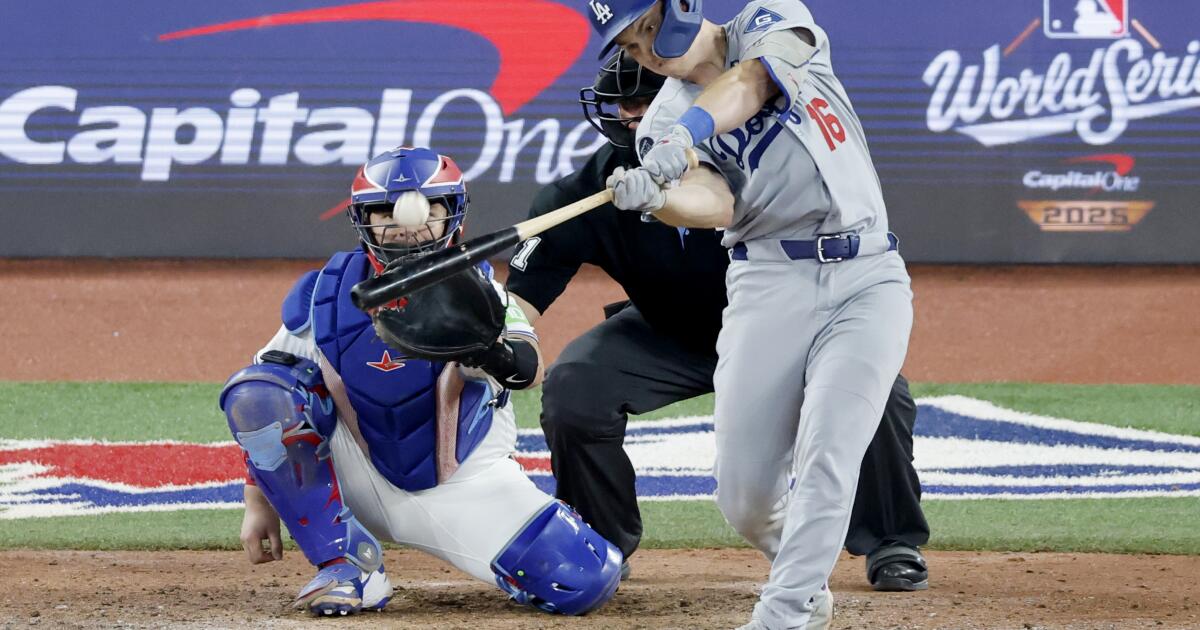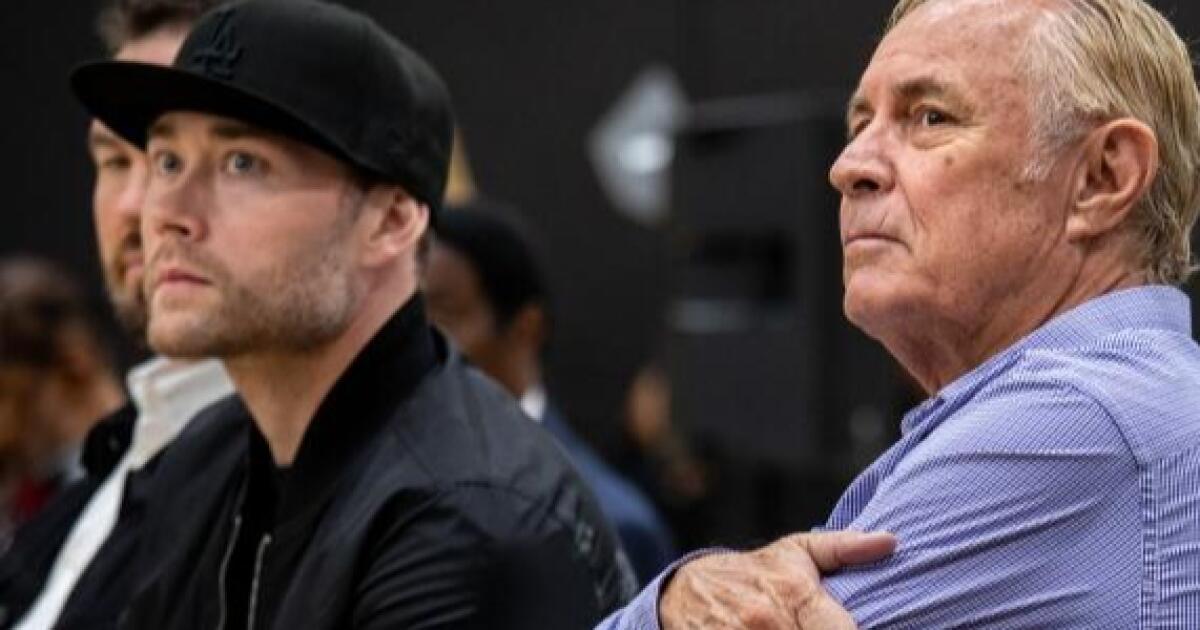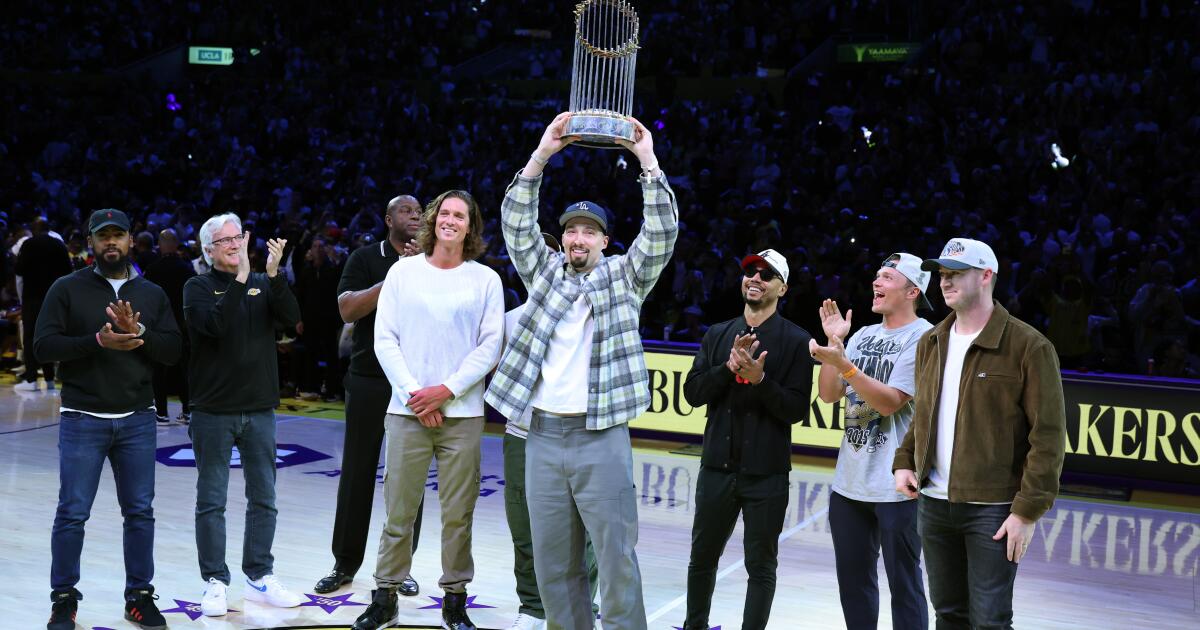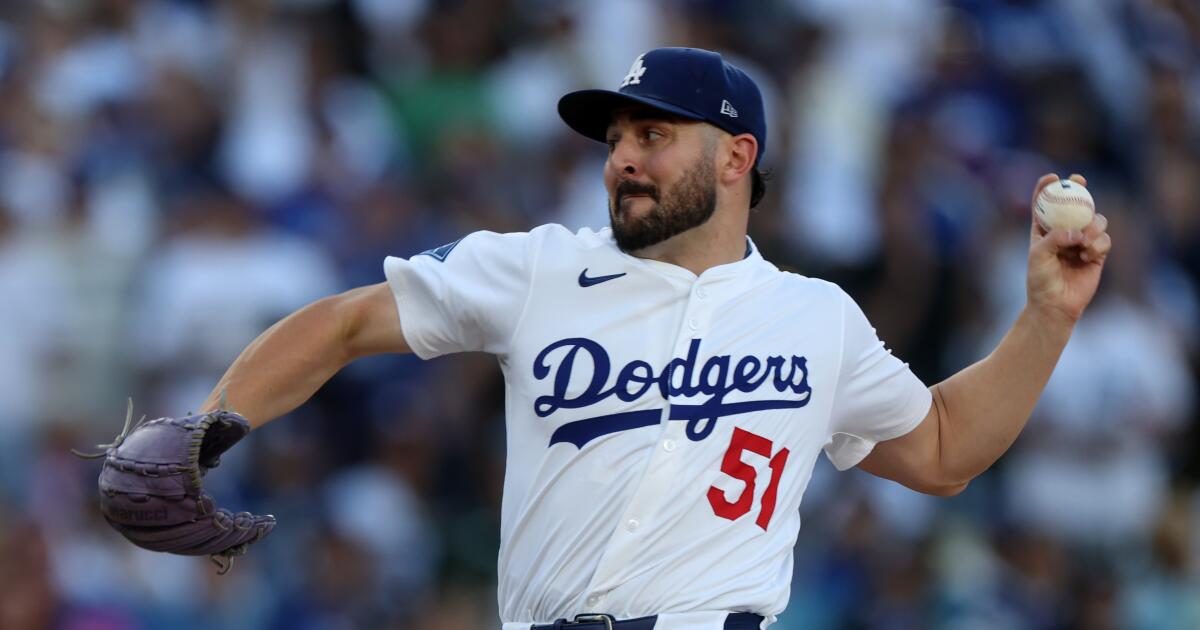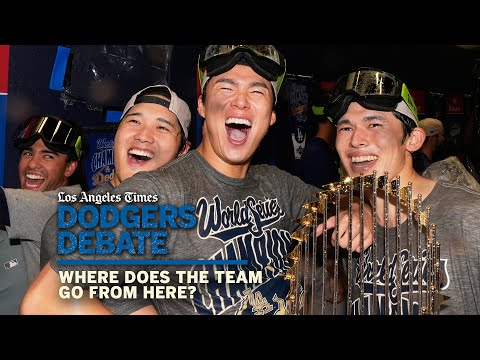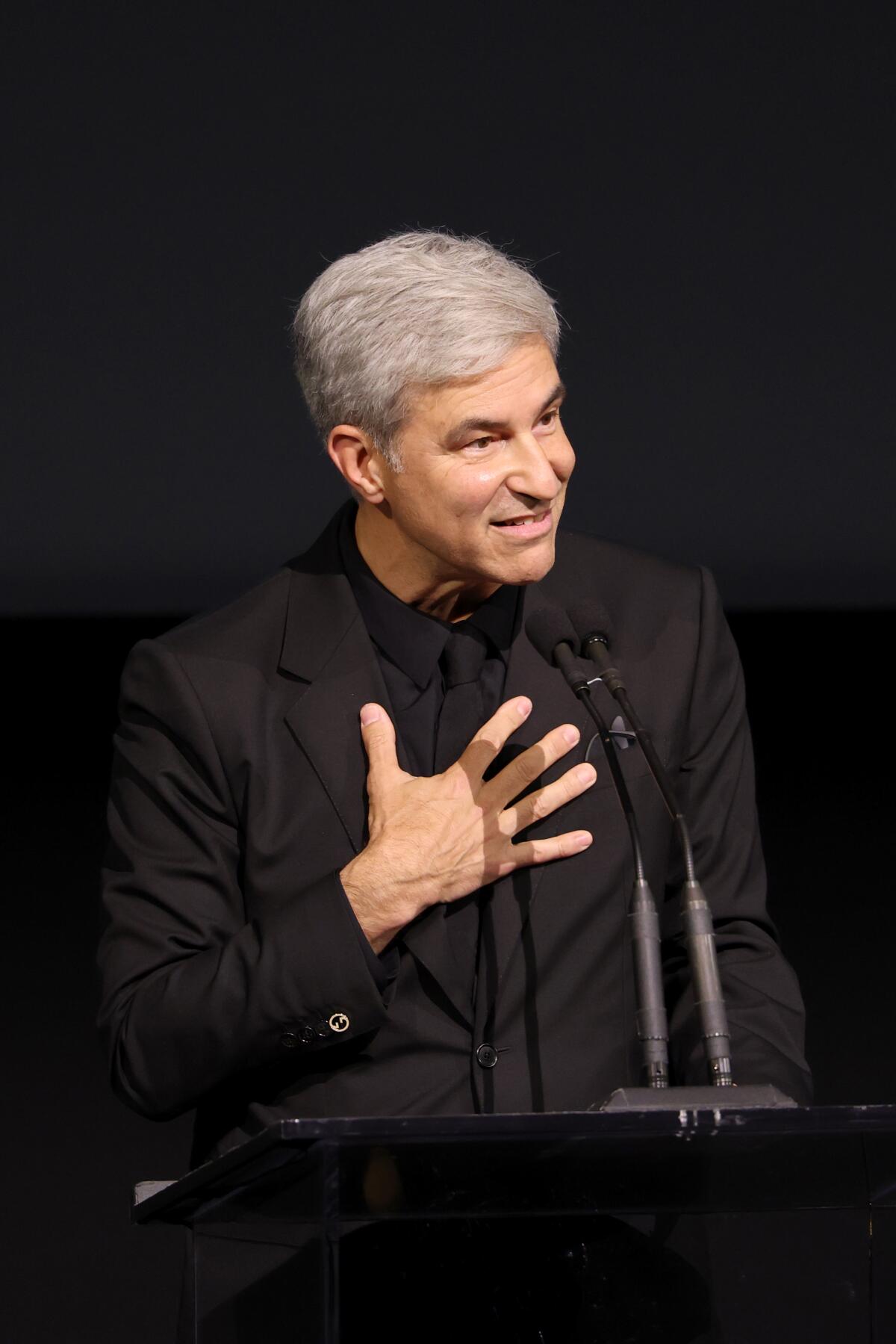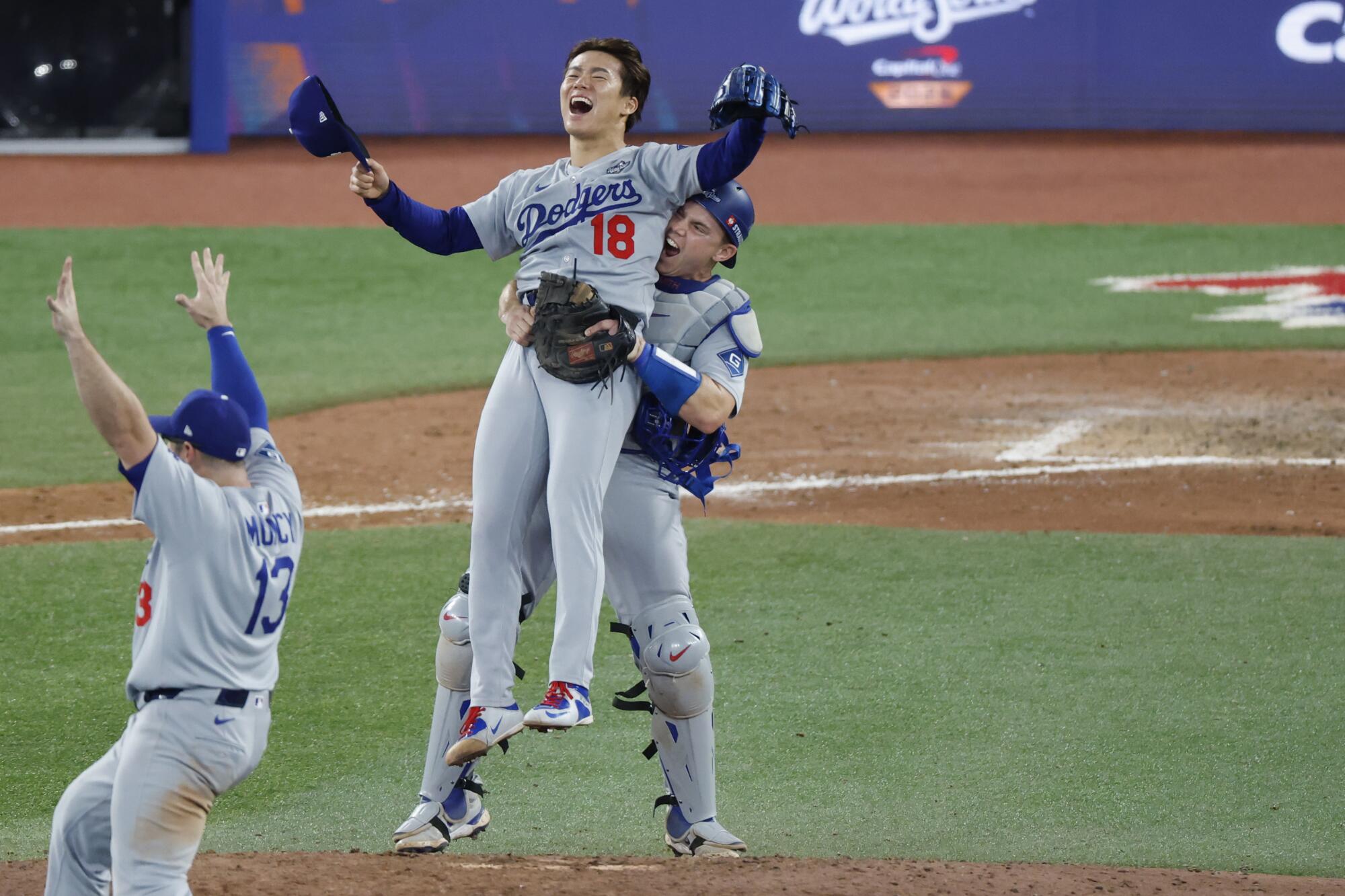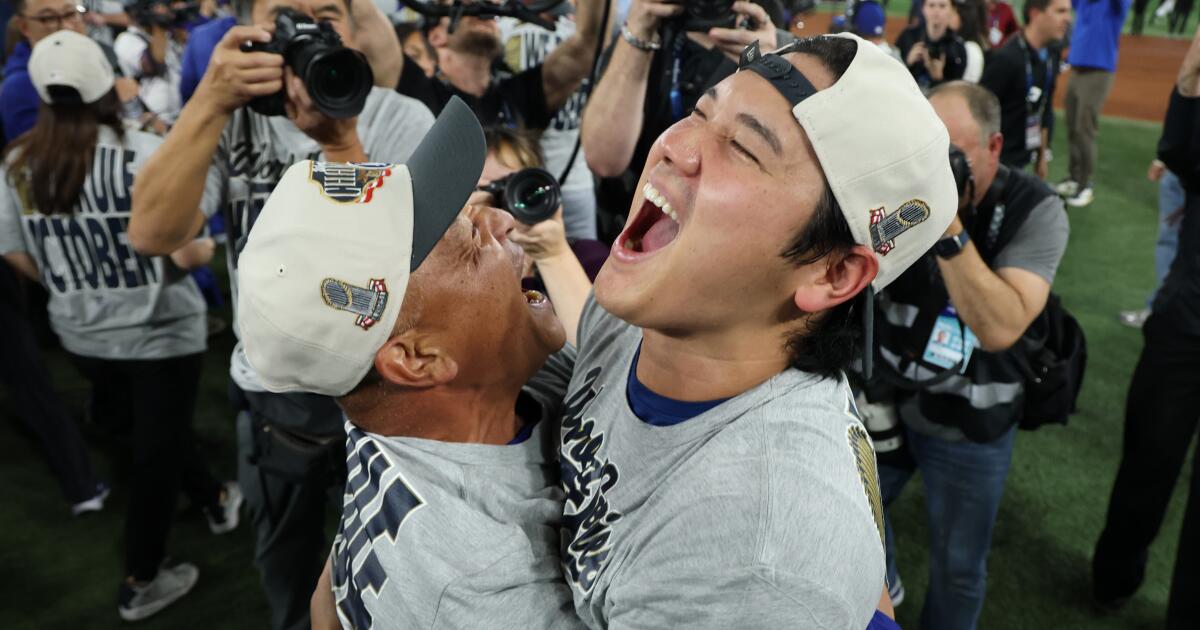How much did 3 historic Dodgers postseason home runs fetch at auction?
Talk about easing the blow. The Canadian father-son duo that secured not one, but both home run balls that doomed the Toronto Blue Jays team they rooted for in Game 7 of the World Series turned the evidence into some serious U.S. currency Saturday night.
Dodgers fans will never forget those baseballs hit by Miguel Rojas in the ninth inning and Will Smith in the 11th flying over the left-field wall and into the first row of seats beyond the Blue Jays’ bullpen.
John and Matthew Bains — sitting side-by-side — will never forget the balls ending up in their hands. John, 61, caught Rojas’ 387-foot home run in his glove on the fly. Two innings later, Matthew, seated next to his dad, saw Smith’s blast land in the bullpen and bounce directly into his hands.
Novices they were not. John has been a Blue Jays fan since the team’s inception in 1977 and purposely sits where he does for proximity to home runs. In fact, he caught one during the American League Division Series against the New York Yankees a few weeks earlier.
Both men brought baseballs into the stadium that they threw back onto the field, giving the Blue Jays faithful the impression the Bains did the honorable thing when, in fact, they did the smart thing for their bank accounts.
On Saturday night, the balls were sold at auction. Smith’s homer, which provided the Dodgers with the winning run, sold for $168,000 while Rojas’ blast that sent the game into extra innings fetched $156,000.
A third unforgettable Dodgers home run ball from the 2025 postseason eclipsed the Game 7 balls. The second of Shohei Ohtani’s three home runs against the Milwaukee Brewers in Game 4 of the National League Championship Series sold for $270,000 in the same SCP Auction.
It was the longest of his three, landing on the Dodger Stadium right-field roof 469 feet from home plate. And it was a key element in what is considered perhaps the greatest performance in baseball history. Ohtani struck out 10 in six innings on the mound in addition to his offensive exploits, sending the Dodgers to the World Series.
Carlo Mendoza’s story of how he ended up with Ohtani’s ball is no less head-shaking than that of the Bains boys. The 26-year-old Los Angeles man said he was eating nachos in a food court behind the right-field pavilion and saw Ohtani hit the home run on a television monitor. He heard the ball hit the roof, dashed toward the sound and retrieved the ball from under a bush.
All three balls were authenticated by SCP Auctions through notarized affidavits and lie detector tests. SCP owner David Kohler said Mendoza was so apprehensive about handing over the ball that he insisted meeting Kohler in the parking lot of the Long Beach Police Dept.
“We authenticated through polygraph and eyewitnesses due diligence,” Kohler said. “From the time we announced we had these baseballs until now, no one else has come forward and said they have the balls. There’s been no contention.”
